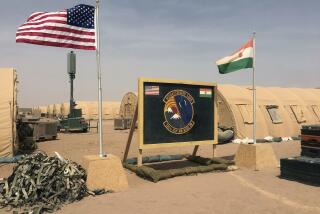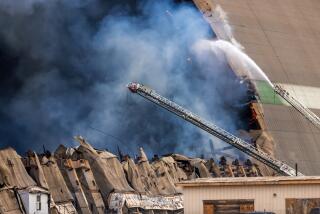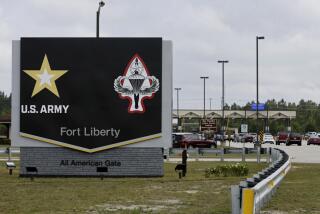Developers Putting Old Bases to Work
- Share via
ANGELES CITY, Philippines — The U.S. Air Force planes are gone, as are the 10-cent happy hours at the officers club. But the doomsayers had it wrong. Neither the Americans’ departure nor the volcanic ash from Mt. Pinatubo’s explosion turned Clark Air Base into a wasteland.
Indeed, Clark, once the largest U.S. military base outside the continental United States, and its sister naval base, Subic Bay, are thriving today as industrial zones and duty-free enclaves, Cold War relics that have helped fuel the Philippines’ economic resurgence.
Before the Philippine Senate voted in a fit of nationalism six years ago to send the Americans packing, Clark and Subic had a local payroll of 68,000, second only to the Philippine government itself. The bases pumped $28 million a day into the economy.
The payroll at the bases today has surpassed 60,000, with more than 400 companies manufacturing everything from Reebok sneakers to Acer computers to armored personnel carriers. Federal Express has made Subic its regional hub. America Online is looking at Clark as a site for a customer support center, and computer chip maker Intel has said it will establish a $30-million warehouse there.
Towering over Clark, four miles to the west, is Mt. Pinatubo, which exploded in June 1991 after 600 years of dormancy. Scientists say the eruption, which killed more than 800 people, was one of the century’s most destructive.
The cloud of ash, hurled 12 miles high, buried Clark and neighboring towns in powder-fine dust, sand and pebbles. It took a year to clean up the base, but many of the surrounding towns never recovered. Where the towns once stood, women wrapped in rags wait in swirling, wind-blown ash, their hands extended to passing motorists in the hope of receiving a peso or two, just a few cents.
Around the town of San Fernando, some of the nation’s most fertile rice fields disappeared under ash that turned as hard as concrete in monsoon rains. Bamban has become a moonscape with no signs of life save for the beggar women, who wait along a road that is little more than a desert track. In Bacolor, worshipers enter the San Guillermo Roman Catholic Church through a window to the choir loft that is now at ground level.
After the eruption, with the Cold War over and Clark devastated, the United States decided to abandon the base it had opened in 1902 as a cavalry camp. But it had hoped to keep the Subic base in Olongapo, 42 miles southwest of Clark, for 10 more years. The Philippine Senate refused and--over the objections of then-President Corazon Aquino--ordered the U.S. military out within a year.
No sooner had the U.S. flag been lowered at Clark in 1992 than Filipinos looted the base, taking away everything they could carry, from skillets to toilet seats. Subic avoided a similar fate when Olongapo Mayor Richard Gordon, the grandson of a U.S. serviceman who had served at Subic, enlisted 8,000 unpaid volunteers to maintain the base.
Like many bases in the United States that have been converted to civilian use, Clark and Subic were--once the volcanic ash was cleaned up--a developer’s dream. They had long runways, recreational facilities, warehouses, housing and office buildings in top-flight condition. The Philippines added tax incentives, duty-free importation of equipment and unlimited purchase of tax- and duty-free consumer goods.
*
Entering Clark today--a base that is as big as the island-state of Singapore--it seems as if the 10,000 airmen from the 13th Air Force and their dependents left only yesterday. The empty parade field is as manicured as a golf course, and not a scrap of paper flutters about.
But at the core, everything has changed. The airfield, with two 2-mile-long runways, is being developed into a major international airport that can handle 1.5 million passengers a year. A rail line will link Clark with Manila.
The success of Clark and Subic has proved a source of pride for Filipinos. “Everyone said we were crazy to start developing Clark after the volcano,” said Francis Elum, vice president for business at the Clark Development Corp. “But with people and companies coming in, we don’t hear that anymore.”
More to Read
Sign up for Essential California
The most important California stories and recommendations in your inbox every morning.
You may occasionally receive promotional content from the Los Angeles Times.













